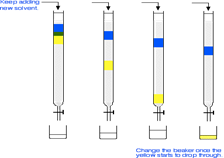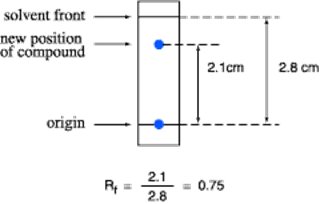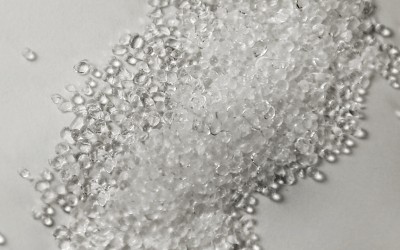Molecule 15 = tert-butyl(((3S,4S)-5-oxo-3,4-bis(((trimethylsilyl)oxy)methyl)cyclopent-1-en-1-yl)methyl)carbamate
Molecule 16 = tert-butyl(((3S,4S)-5-hydroxy-3,4-bis(hydroxymethyl)cyclopent-1-en-1-yl)methyl)carbamate
Molecule 17 = tert-butyl(((3S,4S)-5-chloro-3,4-bis(chloromethyl)cyclopent-1-en-1-yl)methyl)carbamate
 Step 1
Step 1
Molecule 15 (6.17 g, 14.87 mmol, 1.0 equiv.) was dissolved in methanol (150 mL). CeCl3•7H2O (5.54 g, 14.87 mmol, 1.0 equiv.) was added in a 50 mL Round-Bottom Flask and stirred at 23 °C for 5 min. Sodium borohydride(2.25 g, 59.47 mmol, 4.0 equiv.) was then added at 0 °C in two equal portions and the mixture was allowed to warm up to 23 °C by removing the mixture from an ice bath and stirring for an additional 12 hours without the use of an inert atmosphere. The resulting reaction mixture was diluted with ethyl acetate (65 mL) and filtered over a large silica plug (250 g) (eluted with 30% methanol in ethyl acetate until no remaining product was detected in the eluent by Thin Layer Chromatography analysis) to yield crude molecule 16 as a clear colorless oil, which was of sufficient purity to be used directly in the next step. Purification of a sample by flash column chromatography on silica gel (15% methanol in ethyl acetate as eluent) yielded a clear, colorless oil for characterization purposes.
1H-NMR (400 MHz, CD3OD) δ 5.66 (br s, 0.5 H), 5.56 (br s, 0.5 H), 4.65 (d, J = 6.6 Hz, 0.5 H), 4.63 (d, J = 4.8 Hz, 0.5 H), 3.89 − 3.48 (m, 6 H), 2.68 (m, 0.5 H), 2.49 (m, 0.5 H), 2.14 − 2.04 (m, 0.5 H), 1.95 − 1.87 (m, 0.5 H), 1.5 − 1.4 (br s, 9 H);
 Step 2
Step 2
Crude molecule 16 was dissolved in dichloromethane (250 mL) followed by the addition of triphenylphosphine (13.65 g, 52.04 mmol, 3.5 equiv. based on 15 at 23 °C. The reaction mixture was next cooled to 0 °C and stirred for an additional 5 min before adding N-chlorosuccinimide (6.95 g, 52.04 mmol, 3.5 equiv. based on 15). After 10 min at 0 °C, the ice bath was removed and the mixture was allowed to stir for 12 h at 23 °C under argon. Silica gel (100 g) was directly added into the reaction flask followed by the addition of hexanes (1000 mL). The resulting slurry was loaded onto a large column containing hexane packed silica gel (150 g) and eluted with 25% ethyl acetate in hexanes, providing the desired 17 as a yellow oil, which was of sufficient purity to be used directly in the next step (contaminated with trace amount of tripheynl phosphate). Purification of a sample was conducted by PTLC (20% ethyl acetate in hexanes as eluent, elute 2X) to yield pale, yellow oil for characterization purposes. Note: data provided for the inseparable 2:1 mixture of diastereomers.
Glossary:
Column Chromatography: A method of separating a compound for many purposes, such as purifying the make a pure compound by separating the starting material with final product. In this lab, it was used to purify molecule 16 before continuing onto step 2 and once again to purify the final product.

Thin Layer Chromatography (TLC): A method of confirming whether the presence of compounds via comparison of relative polarity.
This method was used to ensure the product was pure enough to go on to the next step of the synthesis. If impure, column is advised.

Silica (Gel): Silica is a white compound which is commonly used in column chromatography. It has extremely electonegative functional groups, enabling separation of compounds of differing polarity by interacting more strongly with polar compounds and not interacting strongly with non-polar compounds. Silica gel was utilized in the column chromatography method of this experiment.
